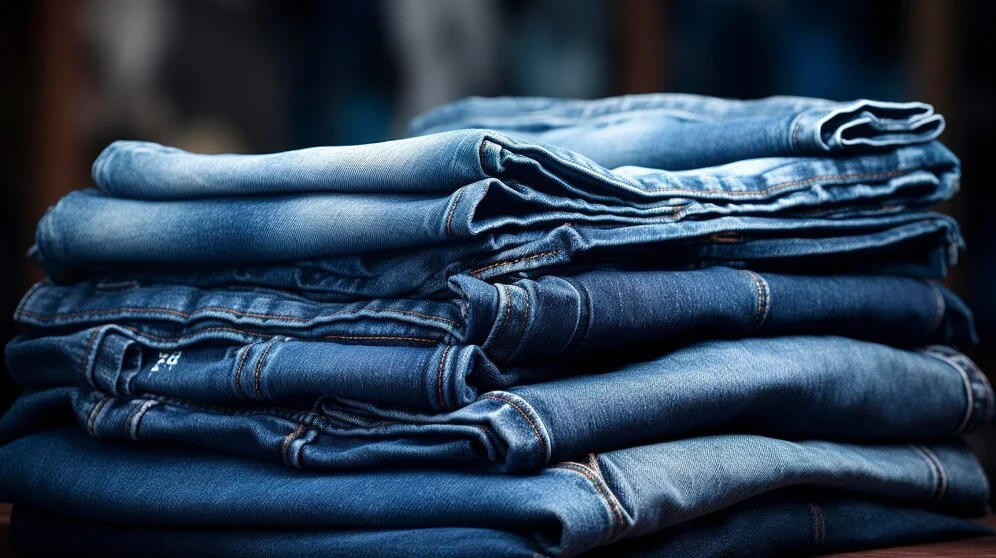In today’s fashion world, Jeansato stands out. It blends denim’s classic appeal with sustainability. It introduces a fresh method that promotes eco-friendly practices without sacrificing style.
Denim has always been a symbol of rebellion and comfort. However, traditional production methods have harmed the environment. Jensato breaks this trend. It aims to protect our planet while still celebrating denim.
This brand combines tradition with innovation. Each piece demonstrates that sustainability in fashion is possible. Jensato now invites us to reconsider our choices. It encourages a world where fashion and nature work together.
Jeansato’s Sustainable Practices

In sustainable fashion, Jensato is leading the way. It’s changing the denim industry. The methods it uses are good for the earth and our closets. Now, let’s take a look at its eco-friendly practices. They’re setting new standards for the future of fashion.
- Eco-friendly Materials
The company starts with raw materials. Instead of regular cotton, it chooses organic fibers. These fibers do not need synthetic pesticides or fertilizers. This choice protects soil health and biodiversity.
The company also uses recycled polyester and Tencel. These materials are tough and biodegradable. As a result, their jeans are eco-friendly from production to disposal.
- Water Conservation
Traditional denim production is very thirsty. But, Jeansato solves this issue with innovative water-saving dyeing. By employing methods such as foam dyeing, they reduce water usage by over 90%.
Additionally, the brand has adopted a ‘zero discharge of hazardous chemicals’ policy. This policy ensures that the water used is clean and safe when returned to the environment.
- Energy-Efficient Manufacturing
Their commitment to sustainability extends to energy use. Harnessing renewable energy sources significantly reduces their carbon footprint. Also, lasers etch designs onto denim. They save energy and replace chemical-heavy distressing.
- Waste Reduction
In a world full of waste, Jeansato stands out. It promotes recycling and upcycling. Customers can return old jeans. The company turns them into new items or insulation. Jensato’s upcycling program makes unique pieces from leftover fabric and flawed products. This shows that waste has value.
The company envisions a green future for denim. It’s not just about the color blue. Fashion, function, and environmental care combine. This creates a beautiful and eco-friendly approach.
The Economic and Ethical Impact of Jeansato
This company believes that ethical fashion can be profitable. We look at how it manages costs, quality, and sustainability. Additionally, we examine its dedication to fair labor practices.
Cost Implications of Sustainable Production

Adopting sustainable practices often means higher costs for ethical reasons. This brand, however, proves that eco-friendly options can be affordable. It runs its supply chain efficiently. It invests in green technology to keep prices low. The company has strategic partnerships. It also focuses on long-term sustainability. These goals balance costs and environmental aims.
Balancing Quality, Cost, and Sustainability
Maintaining the equilibrium between quality, cost, and sustainability is a meticulous endeavor. The quality remains uncompromised. Their garments are priced to reflect the true cost of sustainable production. They educate consumers on the value of durable and eco-friendly clothing. Creative design and manufacturing make each piece last longer. This ensures customers get value for their investment.
Ethical Labor Practices
The company’s ethical labor practices are key to its operations. It guarantees fair wages and safe working conditions across the entire supply chain. This effort not only elevates communities but also sets a new industry standard. It indicates that ethical fashion is the way forward for the entire industry.
Consumer Engagement with Jeansato
In sustainable fashion, consumer engagement is vital. It fuels innovation and growth. This exploration demonstrates how awareness, marketing, and social media amplify a brand’s voice. They amplify their voice for ethical practices.
The Role of Consumer Awareness
Awareness sparks consumer interest and demand. People are now more aware of their purchase impacts. They seek brands that match their values. As a result, more shoppers now choose products that offer both style and sustainability. This shift has significantly boosted the brand’s visibility.
Marketing Strategies
Effective marketing is the key to communicating sustainable product value. This brand uses storytelling. It shares the journey of each item, from the organic field to the stylish wardrobe. Key messages include clear production processes and the benefits of choosing sustainability. These messages resonate with eco-conscious buyers.
Impact of Social Media
Social media plays a key role in boosting the brand’s popularity. Platforms like Instagram and Twitter highlight stylish, sustainable denim. They also connect with supporters and influencers. Users create unboxing videos and style diaries. These videos further establish the brand as a top choice for informed buyers.
Through these avenues, the brand engages with its audience. It also inspires a movement towards a more sustainable and ethical fashion future.
Challenges and Opportunities
The fashion industry is taking steps towards sustainability. It faces both challenges and opportunities. This section focuses on the obstacles to adopting green fashion. It also highlights Jeansato’s innovation and future collaborations.
Overcoming Barriers to Sustainable Fashion Adoption
Supporting sustainable fashion is like solving a maze. People love fast fashion’s quick fixes. However, progress is being made. Education and campaigns are changing minds. They show that sustainable fashion is a smart choice, not a sacrifice. Brands are key in this. They offer products that are both green and appealing.
The Role of Innovation in Future Products
Innovation is the cornerstone of the company’s ethos. It is constantly exploring new materials and processes to reduce its environmental impact. Future products may use biodegradable fibers. They may also use advances in textile recycling. This will push the limits of what sustainable fashion can achieve.
Potential Collaborations and Partnerships
Partnerships spur growth. Jensato can team up with environmental and tech groups. Together, they might set new eco-friendly fashion standards. This requires perseverance, creativity, and teamwork. Jeansato is up for the challenge.
The Future of Jeansato and Sustainable Fashion
The future of denim lies in the fusion of eco-innovation and aesthetic appeal. We’re seeing a surge in the use of organic dyes from nature. They reduce harmful runoff into the water.
Also, smart textiles are being integrated. They can adapt to the environment and last longer. This integration is on the rise. It signals a shift towards clothes that are both sustainable and advanced.
Jeansato’s Roadmap for the Next Decade
Jeansato is making strides to lift industry standards. It plans to use more recycled materials. It will also reduce energy consumption and expand its product line. The aim is to make sustainable denim mainstream. This will cater to those seeking ethical fashion.
The Role of Consumers and Industry in Sustainability
Sustainable fashion’s direction doesn’t rest solely on innovators. It also involves supporters and wearers. Consumers can push for more transparency and sustainability in their purchases. They have that power.
Meanwhile, the industry needs to join forces. It must share knowledge, resources, and a commitment to a cleaner future. Together, consumer choices and industry efforts can quickly make the world more sustainable. It’s a step-by-step process.
Conclusion
Jeansato’s contributions to sustainable fashion are a testament to what’s possible. They show the art of possibility. The brand has not only reimagined denim but also redefined the ethos of an entire industry. The journey towards sustainability never ends. Jensato treads this path with unwavering commitment.
Now, the call to action extends to you, the reader, and the broader fashion community. Embrace the change and champion the cause. Together, let’s create a future where fashion is as kind to the earth as to our style.


